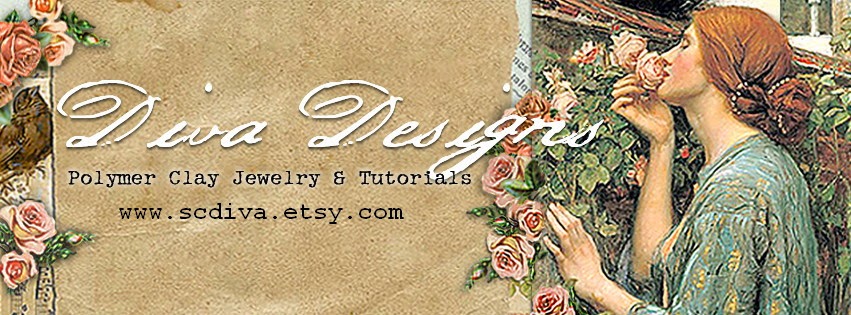First of all, I want to thank everyone who commented and emailed me with reference to my most recent post about the new Controlled Marbling experiments with Chalk Inks and Copper Leaf. I was a little overwhelmed with the response.
Several of you asked if a tutorial on the process was forthcoming. I had not planned on it. In fact, I was hoping with the instructions in the post, those of you who have already purchased the Controlled Marbling Tutorial would be able to create some similar pieces yourselves.
I still do not plan to create another tutorial, but I thought I would give you the names and sources for the clay and ink colors and brands so you could experiment on your own. I would like to see your experiments, too. If you try this, please email me your photos or add them to my Customer Gallery group at Flickr. If you are not a member, I would be happy to send you an invitation to join.
Since I am out of Pardo Translucent for the foreseeable future, I used Kato Translucent and Fimo Translucent in the new pieces, along with Premo Gray Granite. Do not substitute White Granite. It won't work like the Gray Granite.
The Color Box inks I used were: Fluid Chalk Ink REFILLS (I don't usually buy the stamp pads, just the refill bottles of ink) in Alabaster, Yellow Ochre, Tangerine and Burnt Sienna, for the red group; and Aquamarine and Blue Iris for the blue group. Yellow Ochre is my new favorite. I LOVE it, and it blends with other colors to make amazing tertiary colors.
The Ranger/Adirondack inks I used were: Butterscotch, Chili Pepper for the red group and Bottle Green and Baja Blue for the blue group.
I also used Ranger/Adirondack Copper Embossing Powder (which I sprinkled randomly over the inked sheets before marbling.)
The Tsukinek INK PADS I used were: From the Versa Magic Line: Red Brick, Night Sky and Mango Madness; and from the Brilliance Perlescent line: Thyme, Poppy, Crimson and Rocket Red.
The copper foil leaf is from LA D'ore. I have had this for so long, I don't remember where I purchased it, but I believe I got it at Hobby Lobby.
The copper foil leaf is from LA D'ore. I have had this for so long, I don't remember where I purchased it, but I believe I got it at Hobby Lobby.
I purchased all the clay and inks from Polymer Clay Express, and no, I do not get a discount or free stuff from Wilma or PCE for promoting them. I have no idea where else you can buy the inks, and haven't checked.
I blended the edges of some of the colors which were similar, creating overlaps on the leafed sheets. Try blending the brick red with the Mango madness, or the Thyme Green into the Aquamarine and Blue Iris. Mango Madness is one of my favorite colors.
If you try this experiment, allow the Chalk Inks to dry overnight before you stretch the clay or put it through a pasta machine to break up the copper foil; and when you put it through the pasta machine, if it is not completely dry, which I doubt it will be, put the clay sheet between pieces of parchment paper or deli paper so the ink doesn't get on your machine.
The Chalk Inks are thicker, so use a thin layer. You will also find the Chalk inks bead up on the copper leaf. That's okay. This creates interesting patterns during the marbling process. If it bothers you too much, though, just spread it around again with your finger.
When you have marbled the clay sheets and have baked your experiments, sanding and buffing will really bring out the layers of color.






